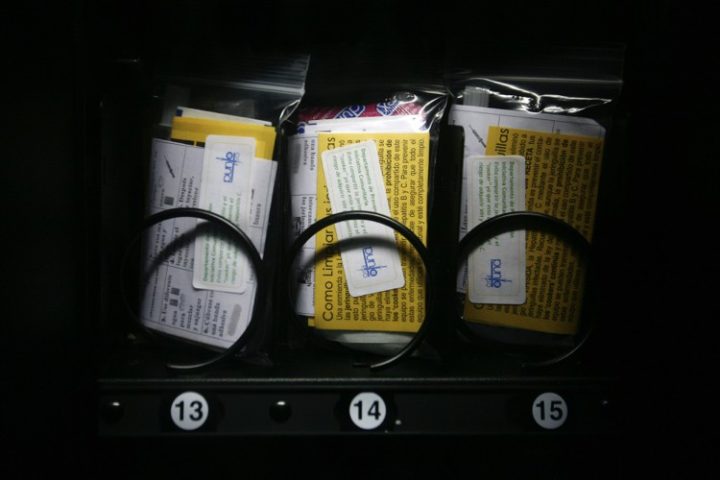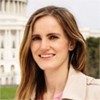
Instead of rooting out the causes of people turning to drug use, New York City is set to install stations that will dispense the anti-overdose drug naloxone, sterile syringes, and other “harm reduction and wellness supplies” in a bid to lower the drug overdoses in predominantly non-white neighborhoods. The initiative claims that that would help tear down barriers created by “white privilege” and “structural racism.”
The non-profit Fund for Public Health (FPH) in New York opened a request for proposals in December to install 10 so-called public health vending machines (PHVM) in order to increase access to sterile injection equipment and reduce syringe reuse and sharing among drug addicts.
The proposal reads:
The Fund for Public Health in New York (FPHNY), on behalf of the New York City Department of Health and Mental Hygiene (DOHMH), is currently accepting proposals from organizations in New York City (NYC) to pilot the implementation of Public Health Vending Machines (PHVM) in NYC. FPHNY serves as the fiscal agent for DOHMH.
The initiative is expected to cost taxpayers $730,000, with the first machines being installed as early as February. Since that will be a pilot program, more machines could be set across the city in the future.
The city’s health authorities view the initiative as an anti-racist effort to improve the health and wellbeing of the non-white New Yorkers: “The DOHMH is committed to improving health outcomes for all New Yorkers by explicitly advancing racial equity and social justice.” The document further explains that “Racial equity does not mean simply treating everyone equally, but rather, allocating resources and services in such a way that explicitly addresses barriers imposed by structural racism (i.e. policies and institutional practices that perpetuate racial inequity) and White privilege (i.e. historical and contemporary advantages in access to resources and opportunities afforded to White people)” it believes would help “all people” to “have access to what they need to enjoy full, healthy lives.”
The announced goal of the initiative is a promotion of “health and dignity” of New Yorkers with drug addiction. The concrete objectives include destigmatizing of drug use and drug addicts; improvement of “the quality of life” by making anti-overdose drug naloxone more accessible; preventing infectious diseases by improving access to clean syringes; providing the drug supplies and accessories “to individuals in a culturally and linguistically competent manner.” Meaning, even those addicts who do not speak English would be reached by the program.
Apparently, the NYC Department of Health assumes that providing drug addicts with clean needles and anti-overdose drugs would help them to live “full, healthy lives,” and do not believe that such an approach simply encourages a deadly addiction that is known to destroy people’s lives by undermining their physical and mental health, relationships, and financial stability.
That same message is channeled in the city’s guidance to drug and alcohol users that aims to “keep them safe” during the COVID pandemic. The department urges people to practice “safer” drug use. The advice reads: avoid taking drugs alone; start with less and use slowly; avoid mixing drugs; “be aware” of fentanyl — the department warns that that “powerful opioid” increases chances of overdose (it doesn’t say “don’t use it, it may kill you”); don’t share “drug use supplies” such as needles and pipes.
All of these diplomatic recommendations that leave lots of room for drug users’ discretion sound especially startling since the same department uses a much harsher tone in its COVID recommendations, such as urging parents of children as young as five to get them vaccinated with experimental vaccines, mask up even when vaccinated, test regularly and avoid social events.
Business Insider reports that in New York City, 2,062 people died from “unintentional overdoses” in 2020, the highest rate since reporting began in 2000, per the data from the NYC Department of Health and Mental Hygiene. Of the overdose victims, most were black and Latino residents in neighborhoods with the highest rates of poverty, including South Bronx and East Harlem, the report found.
New York Post notes that not everyone was excited about the program.
Hawk Newsome, the incendiary leader of Black Lives Matter in New York City said that he would support the concept if these vending machines were put in Central Park, Fifth Avenue and Park Avenue — “right where the wealthiest people stay.” “Why should our children have to walk past people who are congregating around these machines and nowhere else,” he added.
Right now, the machines are planned to be installed in “underserved” neighborhoods in East New York (Brooklyn), Central Harlem, East Harlem, Union Square (Manhattan), five neighborhoods in Bronx, and a couple in Staten Island and Queens.
“We should be finding ways to take these people and put them into a rehabilitation program so they can overcome their addiction and we can try and save their lives,” stated David Carr, a newly elected city councilman from Staten Island who represents one of the proposed “priority” areas.
On the other hand, Carr believes that the so-called public health vending machines would lead to the crime rate increase and would worsen the overdose rates instead of improving them.
Steven Hill, a Greenwich Village activist who has been confronting the drug crisis in Washington Square Park, said that the city officials are “enabling addicts at this point,” and that an initiative would not help the people to overcome their addiction.
In November, New York became the first city in the United States to introduce supervised consumption sites for illegal drugs such as heroin.
In October, New York Governor Kathy Hochul signed a law that decriminalizes possession and sale of hypodermic needles and syringes in the Empire State in a bid to stop the opioid crisis.




